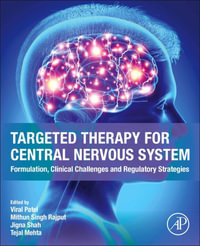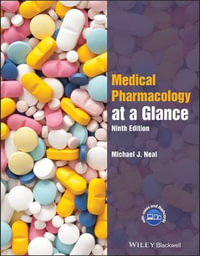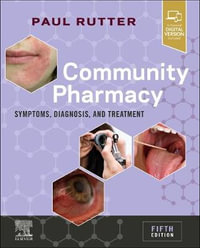1 Introduction.- Section I: Recent Advances in Understanding Normal Development at the Biochemical and Molecular Level.- 2 Cardiac Morphogenesis: Formation and Septation of the Primary Heart Tube.- A. Introduction.- B. Establishing Heart-Forming Primordia.- I. Commitment to the Heart Lineage.- II. Formation of the Heart-Forming Fields.- III. Segregation of Lineage Within the Heart Fields.- IV. Molecular Regulation of the Cardiomyogenic Lineage.- V. Regulation of the Endocardial Lineage.- VI. Fate of the Heart Fields.- C. Morphogenesis of the Primary Heart Tube.- I. Elongation and Segmentation of the Tubular Heart.- II. Morphology of the Primitive Segments.- III. Developmental Fate of the Primitive Segments.- 1. Atrium.- 2. Ventricles.- 3. Atrioventricular Canal and Conotruncus.- D. Septation and Remodeling of the Tubular Heart into Four Chambers.- I. Looping.- II. Integration of Septal Primordia into Adult Partitions.- E. Conclusion.- References.- 3 Vertebrate Limb Development.- A. Introduction.- B. Developmental Anatomy of the Limb.- C. Pattern Regulation.- I. The Apical Ectodermal Ridge and Fibroblast Growth Factors.- II. The Zone of Polarizing Activity and the Supernumerary Response.- III. Sonic Hedgehog and Zone of Polarizing Activity Signaling.- IV. Regulation of Zone of Polarizing Activity Signaling/Sonic Hedgehog Expression.- V. Retinoic Acid and the Zone of Polarizing Activity Signal.- D. Homeobox-Containing Genes and Positional Information.- E. Digit Morphogenesis.- F. Conclusions.- References.- 4 Axial Skeleton.- A. Introduction.- B. Morphogenesis.- I. Formation of the Primitive Streak and the Notochord.- II. Segmentation of the Paraxial Mesoderm into Somites.- III. Differentiation of Somites into Dermomyotome and Sclerotome.- IV. From Sclerotomes to Mesenchymal Prevertebrae.- V. Chondrification of Prevertebrae.- VI. Ossification of Prevertebrae.- C. Genes Involved in Axial Skeleton Formation.- I. Gastrulation and Formation of Paraxial Mesoderm.- 1. Growth Factors, Signaling Molecules, and Their Receptors.- 2. Transcription Factors.- II. Segmentation of the Paraxial Mesoderm into Somites.- 1. Intercellular Signaling.- 2. Cell Adhesion.- 3. Extracellular Matrix Components.- 4. Transcription Factors.- III. Patterning of Somites.- 1. Craniocaudal Patterning: Cranial and Caudal Somite Halves.- 2. Dorsoventral Patterning.- a) Signaling Molecule Sonic Hedgehog.- b) Interpretation of the Inductive Sonic Hedgehog Signal: Transcription Factors of the Pax Gene Family.- c) Connection Between the Inductive Sonic Hedgehog Signal and the Nuclear Response Mediated by Pax Genes: Signal Transduction Via Cyclic Adenosine Monophosphate-Dependent Protein Kinases.- IV. Further Development of the Somite Compartments.- V. Regionalization Along the Craniocaudal Axis and Hox Genes.- VI. Local Control of Bone Shape During Embryogenesis and Growth.- 1. Bone Morphogenetic Proteins.- 2. Fibroblast Growth Factors and Their Receptors.- 3. Parathyroid Hormone-Related Peptide.- VII. Collagens and the Extracellular Matrix.- VIII. Regulation of Bone Maintenance and Bone Remodeling: Osteopetrosis and Osteoporosis.- IX. Influence of Teratogens on Axial Skeleton Development.- References.- 5 Molecular Mechanisms Regulating the Early Development of the Vertebrate Nervous System.- A. Early Development of the Nervous System.- B. Neurogenesis: The Role of the Helix-Loop-Helix Proneural Genes.- C. Establishing Identities Along the Anterior-Posterior Axis.- D. Segmentation and Patterning of the Hindbrain.- E. Generation of the Midbrain-Hindbrain Junction: The Role of Wnt1, En1 and Pax2.- F. Dorsoventral Patterning: The Opposing Roles of Sonic Hedgehog and BMPs.- References.- 6 Genetic Control of Kidney Morphogenesis.- A. Kidney Development as a Paradigm for Organogenesis.- B. Experimental Approaches for Studying Kidney Morphogenesis.- I. Transfilter Recombination System.- II. Genetic Analysis of Nephrogenesis Using Knockout, Transgenic, and Spontaneous Mouse Mutations.- III. Cell Culture Systems.- C. Early Morphogenetic Events.- I. Pronephros, Mesonephros, and Metanephros.- II. Commitment to Nephrogenic Fate.- III. Nephric Duct and Ureteric Bud Outgrowth.- IV. Pole of Hox Genes.- D. Ureteric Bud and Metanephric Induction.- I. Transmission of the Inductive Signal from Ureteric Bud to Metanephric Mesenchyme.- II. Propagation of the Inductive Signal Within the Mesenchyme.- III. Epithelial-Mesenchymal Transformation.- IV. Pole of Pax-2.- V. Establishment of Epithelial Polarity.- VI. Tubule Formation.- E. Glomerular Development.- I. Glomerular Epithelium.- II. Mesangial Cells and Angiogenesis.- III. Glomerular Basement Membrane.- F. Human Urogenital Anomalies and Malformation Syndromes.- I. Renal Agenesis and Dysplasias.- II. Renal Cystic Disease.- III. Role of Environmental Factors.- G. Conclusions.- References.- 7 Palate.- A. Why Study the Palate?.- B. Morphogenesis of the Palate.- C. Reorientation of the Palate.- I. Extracellular Matrix and Mesenchyme.- II. Epithelium.- D. Fusion of the Palate.- E. Mesenchymal-Epithelial Interactions.- F. Neurotransmitters.- I. Serotonin.- II. Catecholamines.- III. ?-Aminobutyric Acid and Diazepam.- G. Growth Factors.- I. Glucocorticoids.- II. Transforming Growth Factor-?, Epidermal Growth Factor, and Epidermal Growth Factor Receptor.- III. Transforming Growth Factor-?1 , -?2, and -?3, and Their Receptors.- IV. Insulin-Like Growth Factors I and II.- V. Acidic and Basic Fibroblast Growth Factor.- VI. Interactions.- H. Homeobox Genes.- I. Patterns of Expression.- II. Homeobox Mutations and Cleft Palate.- III. Signaling Relationships.- I. Association of Cleft Palate in Humans with Candidate Genes.- References.- Section II: Common Biochemical, Metabolic, and Physiological Mechanisms of Abnormal Development.- 8 Cell Death.- A. Introduction.- B. Embryonic Cell Death.- I. Orthotopic Pattern.- II. Homotopic Patterns.- III. Heterotopic Patterns.- C. Mechanisms of Cell Death.- I. Necrosis.- II. Apoptosis.- 1. Chromatin Degradation.- 2. Protease Involvement.- D. Implications for Drug Toxicity.- I. Three Planes of Damage.- II. Signal Transduction.- III. Metabolic Imbalance.- E. Death Circuits.- I. B Cell Lymphoma/Leukemia-2.- II. Tumor Suppressor Gene p53.- References.- 9 Cellular Responses to Stress.- A. Introduction.- B. Cellular Responses to Stress.- I. Genotoxic Stress Response.- 1. Introduction.- 2. Prokaryotes.- 3. Eukaryotes.- a) Yeast.- b) Mammals.- ?) DNA Damage-Inducible Genes.- ?) DNA Repair Genes.- ?) Cell-Signaling Genes.- ?) Other DNA Damage-Inducible Genes.- ?) Regulation of the Genotoxic Response.- ?) Mammalian Embryonic DNA Damage-Inducible Genes.- II. Oxidative Stress Response.- 1. Introduction.- 2. Prokaryotes.- a) The oxyR Regulon Gene.- b) The SoxRS Regulon Gene.- 3. Eukaryotes.- a) Stress-Inducible Genes.- b) Heme Oxygenase.- c) Aromatic Hydrocarbon-Responsive Gene Battery.- d) Embryonic Oxidative Stress-Inducible Genes.- III. Heat Shock Response.- 1. Introduction.- 2. Heat Shock Proteins.- 3. Heat Shock Proteins as Chaperones.- 4. Heat Shock Proteins and Thermotolerance.- 5. Heat Shock Proteins and Mammalian Development.- C. Summary and Future Directions.- References.- 10 Cell-Cell Interactions.- A. Introduction.- B. Cell-Cell Recognition and Cell Adhesion.- I. Cell-Cell Recognition and/or Adhesion Molecules.- C. How Could Normal Functioning Be Disrupted (Teratogenesis)?.- D. In Vitro and In Situ Analyses.- I. Ligand-Receptor Interaction Blockade.- II. Availability (Expression and Functional Regulation).- III. Downstream Signaling Cascade.- E. Conclusions.- References.- 11 Growth Factor Disturbance.- A. Introduction.- B. Technological Approaches.- C. Perturbation Studies on Growth Factor Families.- I. Transforming Growth Factor-?.- II. Fibroblast Growth Factors.- III. Platelet-Derived Growth Factors.- IV. Transforming Growth Factor-?.- V. Insulin-Like Growth Factors.- 1. Human Disorders Associated with Insulin-Like Growth Factor II Gene Dysfunction.- D. Conclusions.- References.- 12 Targeted Gene Disruptions as Models of Abnormal Development.- A. Introduction.- B. Insertional Mutants.- C. Knockout Mice.- D. Antisense.- E. Gene-Teratogen Interactions.- References.- 13 Nucleotide Pool Imbalance.- A. Introduction.- B. Determination of Nucleotide Pools.- C. Interruption of Pyrimidine Nucleotide Pools.- I. Fluoropyrimidines.- II. Other Halogenated Pyrimidines.- III. Cytosine Arabinoside.- IV. Azauridine.- D. Interruption of Purine Nucleotide Pools.- I. 6-Mercaptopurine and 6-Thioguanine.- II. Deoxycoformycin and Chlorodeoxyadenosine.- III. Hydroxyurea.- IV. Methotrexate.- E. Conclusion.- References.- 14 Interference with Embryonic Intermediary Metabolism.- A. Introduction.- B. Normal Glucose Metabolism.- C. Preimplantation Pattern of Glucose Metabolism.- D. Glucose Metabolism During the Post-implantation Stage.- I. The Krebs Cycle and the Pentose Phosphate Pathway.- 1. The Pentose Phosphate Pathway.- 2. The Krebs Cycle.- II. Anabolic Uses.- E. Perturbation of Glucose Metabolism.- I. Hypoglycemia.- II. Hyperglycemia.- III. Other Substrates.- IV. Glycolytic Inhibitors.- V. Pentose Phosphate Pathway Inhibitors.- VI. Krebs Cycle Inhibitors.- VII. Oxidative Phosphorylation Inhibitors.- F. Future Research.- References.- 15 Alterations in Folate Metabolism as a Possible Mechanism of Embryotoxicity.- A. Introduction.- I. Dietary Sources.- II. Recommended Dietary Allowances.- III. Assay Methods.- IV. Characteristics of Folate Deficiency.- B. Biochemical Pathways Involving Folates.- I. One-Carbon Metabolism.- II. Involvement in Methionine Metabolism.- C. Embryotoxicity of Folate Deficiency.- I. Human Studies.- II. Serum Folate Levels Associated with Embryotoxicity.- III. Animal Studies.- IV. Role of Other Compounds in Embryotoxicity.- D. Compounds Which Adversely Affect Folate Levels.- I. Triamterene.- II. Trimethoprim.- III. Sulfasalazine.- IV. 2-Methoxyethanol.- E. Developmental Toxicants Which May Act Via Folate Perturbations.- I. Aminopterin and Methotrexate.- II. Phenytoin.- III. Valproic Acid.- IV. Alcohol.- V. Pyrimethamine.- F. Conclusions.- References.- 16 Prostaglandin Metabolism.- A. Introduction.- B. Signal Transduction.- C. Arachidonic Acid Cascade.- D. Individual Teratogens.- I. Glucocorticoid- and Diphenylhydantoin-Induced Embryopathy.- II. Diabetic Embryopathy.- III. Cyclosporin A.- E. Conclusion.- References.- 17 Reactive Intermediates.- A. Introduction.- B. Elimination.- C. Bioactivation.- I. Cytochromes P450.- 1. Embryological Considerations.- 2. Mixed-Function Monooxygenase Activity.- 3. Peroxygenase Activity.- 4. Free Radical Production.- II. Peroxidases.- 1. Prostaglandin H Synthase and Other Peroxidases.- 2. Mechanisms of Bioactivation.- a) Peroxidase-Mediated Bioactivation.- b) Peroxyl Radical-Mediated Bioactivation.- c) Co-substrate-Derived Oxidant.- D. Reactive Intermediates.- I. Electrophiles.- II. Free Radicals.- E. Detoxification.- I. Glutathione.- II. Glutathione S-transferase.- III. Epoxide Hydrolase.- F. Oxidative Stress.- I. Embryological Considerations.- II. Measurements of Oxidative Stress.- 1. Salicylate Hydroxylation.- 2. Electron Paramagnetic (Spin) Resonance Spectrometry.- 3. Fluorescence Detection of Free Radicals and Oxidative Damage.- 4. Oxidative Damage.- 5. Protein/Gene Expression.- G. Cytoprotection.- I. Glutathione.- II. Antioxidants.- III. Glutathione Peroxidase.- IV. Glutathione Reductase.- V. Glucose-6-phosphate Dehydrogenase.- VI. Superoxide Dismutase and Catalase.- H. Molecular Target Damage.- I. Covalent Binding.- 1. DNA.- a) Electrophilic Reactive Intermediates.- b) Reaction of Free Radicals with DNA and Its Nucleotides.- c) Detection of DNA Adducts.- ?) Exhaustive Washing.- ?) 32P-Postlabelling.- 2. Protein and Lipids.- a) Binding of Electrophiles to Proteins.- b) Binding of Free Radicals to Proteins.- c) Detection of Protein Adducts.- ?) Radiolabelled Substrate.- ?) Antibodies.- II. Oxidation.- 1. DNA.- 2. Lipids.- 3. Protein.- I. Repair.- I. Protein.- II. DNA.- References.- 18 Hypoxia and Altered Redox Status in Embryotoxicity.- A. Introduction.- B. Hypoxia.- I. Hypoxia as a Cause of Birth Defects.- II. Vascular Clamping - Experimentation.- III. Edema Syndrome.- IV. Chemicals and Response in Hypoxia.- 1. Smoking and Nicotine.- 2. Cocaine.- 3. Niridazole and Related Nitroheterocyclic Agents.- 4. Phenytoin, Vasodilators, and Vasoconstrictors.- C. Hypoxia and Redox Status.- I. Glutathione and Related Low-Molecular-Weight Thiols.- II. Pyridine Nucleotide Status.- III. Control of pH and Hypoxia.- References.- 19 Altered Embryonic pH.- A. Introduction.- B. Historical Perspective of Agents Hypothesized to Act by Altering Embryonic Intracellular pH.- I. Acetazolamide and CO2.- II. Anticonvulsants.- 1. Valproic Acid.- 2. Trimethadione.- III. Cadmium.- IV. Ethanol.- V. Hyperthermia.- C. pH of Embryo Tissues and Fluids.- D. Pharmacokinetics.- E. Cellular Regulation of Intracellular pH.- I. Na+/H+ Exchange.- II. Cl-/HCO3- Exchange.- III. Na+ Channels.- IV. H+ Channels.- F. Potentiation of Teratogenesis by Inhibitors of Intracellular pH Recovery.- G. Cellular Activities Associated with pH.- H. Conclusion.- References.- 20 Maternal Physiological Disruption.- A. Introduction.- B. Specific Maternal Physiological Disruptions.- I. Acid-Base Imbalance.- II. Osmotic Disruption.- III. Maternal Cardiovascular Disturbances.- 1. Introduction.- 2. Maternal Cardiac Function.- 3. Uterine Vasoconstriction.- 4. Maternal Anemias.- IV. Body Temperature.- 1. Introduction.- 2. Hyperthermia.- 3. Hypothermia.- V. Stress.- VI. Other Physiological Disruptions.- C. Strategies and Methods for Future Research.- D. Maternal Toxicity and Risk Assessment.- E. Conclusions.- References.
























